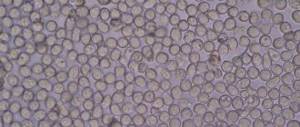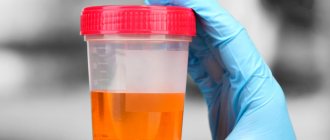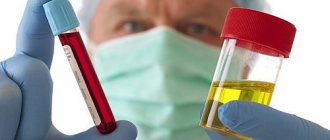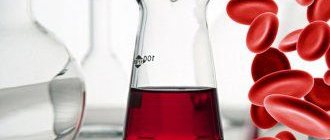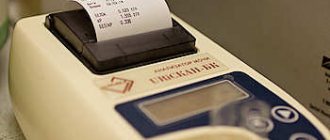When testing urine in a laboratory, two types of special substances can be found in its composition that can color urine - bilirubin and urobilinogen. They can also be present in people who do not have health problems, but not in significant quantities.
If bilirubin is in the urine, what does this mean, only a doctor can tell by conducting a general and biochemical urine test. Having discovered that the permissible value of this substance is exceeded, the doctor can make a diagnosis of bilirubinuria.
Normal indicators
In the blood, bilirubin exists in two states - direct and indirect. Only direct bilirubin enters the urine, since it is a water-soluble compound. The causes of such a phenomenon as bilirubinuria are the development of various pathological conditions. The permissible level of such a substance in the blood as direct bilirubin in an adult and a child over one year old should not exceed 5.1 µmol/l, and indirect bilirubin should be 75% of the total - up to 15.4 µmol/l.
The normal level of total blood bilirubin is from 3.4 to 17.1 µmol/l. When it increases significantly due to the direct fraction, it begins to be filtered by the kidneys and appears in the urine.
Total bilirubin in newborns is slightly increased, since their bile excretion system is not yet fully formed. For this reason, the norm for a child at birth of total blood bilirubin is up to 60 µmol/l (in premature infants - up to 170 µmol/l), direct bilirubin should not exceed 10% of the total.
Let's figure out what kind of substance this is and what are the reasons for its appearance in the urine.
see also
- FSH hormone what is it
- Blood test for glucose interpretation
- Is it possible to eat before donating blood from a finger prick for a general analysis?
- Nutrition for high blood sugar
- How does Helicobacter pylori infection occur?
- How to find out the gender of the baby
- Test for hereditary thrombophilia
- What to do if your blood pressure goes up
- Ultrasound of internal organs: how to prepare
- How to increase the amount of testosterone in the body
- Staphylococcus what kind of disease
How does bilirubin get into urine?
Red blood cells are blood cells whose main task is to exchange oxygen in tissues. After their death, hemoglobin is destroyed and broken down into porphyrin and protein. Then, as a result of a series of biochemical reactions, porphyrin is converted into free bilirubin (indirect). It is a toxic fat-soluble substance, and to neutralize it when it enters the liver cells, it binds to glucuronic acid. Thus, it turns into direct (water-soluble), which, together with bile acids, enters the intestinal lumen, where it is excreted in feces.
Some of its derivatives are absorbed back, and they are recycled in hepatocytes. The norm of this substance in an adult and a child in the urine is no more than 4 mg per day. This is a significantly lower figure than what a laboratory analysis can reveal. Therefore, when assessing the result, it is said that there is no bilirubin in the urine.
When bilirubin is higher than normal
There are three reasons why bilirubin in urine is increased:
- hemolytic jaundice;
- hepatic jaundice in case of liver dysfunction in both adults and children;
- subhepatic jaundice (due to blockage of the bile ducts).
The mechanism of bilirubinuria in hepatic jaundice is as follows. The reasons for this phenomenon are the development of pathological conditions in which mass death of liver cells begins. In this case, part of the direct bilirubin and its intermediate substances accumulate in the blood, are filtered through the kidneys, and are excreted in the urine.
Indirect bilirubin also accumulates in the blood, but it is not filtered by the kidneys, since it does not dissolve in water. Excessive concentrations of this substance have a detrimental effect on the brain and cause hepatic encephalopathy. Bilirubinuria does not always occur with hepatic jaundice. In urine, the analysis detects only direct bilirubin, since it has the ability to dissolve in water. This condition is typical for the following diseases:
- viral hepatitis;
- toxic hepatitis (hepatocytes die as a result of the action of toxins);
- alcoholic hepatitis;
- some infectious diseases affecting the liver (mononucleosis, leptospirosis);
- drug-induced hepatitis (antibiotics, steroid hormones);
- cholestatic hepatitis (develops in the last stage of pregnancy);
- chronic hepatitis;
- biliary cirrhosis;
- malignant neoplasm or metastases in the liver.
Sometimes the reasons lie in certain conditions that cause the rate to increase. This occurs as a result of increased breakdown of red blood cells. At the same time, the function of the liver is completely preserved, but its cells, when bilirubin is increased, are simply not able to process such an amount of toxic substances. As a result, bilirubinuria begins, as the analysis shows. This can happen with the following pathologies:
- infections that cause damage and death of red blood cells (malaria);
- sepsis;
- poisoning with salts of heavy metals, poisons, toxins, chemicals;
- taking certain medications;
- autoimmune processes;
- consequences of severe trauma with disruption of the integrity of large bones and blood vessels.
Direct (water-soluble) bilirubin in urine is detected in small quantities when liver function is impaired. With obstructive jaundice, its levels are increased both in the blood and in the urine. This can be determined by assessing the color of the urine: it becomes brownish (the color of beer) and foams. In some cases, with massive breakdown of red blood cells, bilirubin does not appear in the urine, since its increase occurs due to fat-soluble (indirect) bilirubin.
Such different jaundice
Jaundice is not a separate disease, but a symptom that is characteristic of many pathologies. Depending on the mechanism of development, it has three forms.
This symptom can be detected with the naked eye.
Parenchymatous
Hepatic jaundice develops with direct damage to hepatocytes.
Among its common causes:
- viral hepatitis;
- toxic liver damage (including alcohol, drugs);
- autoimmune hepatitis.
Mechanical
Subhepatic jaundice is associated with a mechanical obstruction to the outflow of bile into the duodenum.
It could be:
- bile duct stone;
- muscle spasm with JVP;
- tumor formation.
A common cause of pathology is cholelithiasis
What about hemolytic jaundice?
Prehepatic jaundice develops with increased destruction of red blood cells.
This symptom is characteristic of both congenital and acquired diseases:
- sickle cell anemia;
- microspherocytic anemia;
- transfusion of incompatible blood;
- exposure to poisons, toxins, and some parasites;
- autoimmune pathologies;
- tumor diseases.
Note! The only normal variant of erythrocyte hemolysis is physiological jaundice of newborns (not to be confused with hemolytic disease of newborns). It develops 2-3 days after birth and is associated with the replacement of fetal hemoglobin F with hemoglobin A.
Jaundice of newborns
Thus, with prehepatic jaundice, a large amount of free (indirect, unconjugated) bilirubin is formed. Its level in the blood increases, and the concentration of total BIL also increases.
However, determination of bilirubin in urine may show a negative result. Why is this happening?
The fact is that with hyperbirirubinemia, only the direct fraction of bile pigment can be released from the kidneys, but with hemolytic jaundice it is not formed. But in the TAM there is a significant increase in the concentration of urobilinogen.
Table: Differential diagnosis of jaundice:
| Signs | Type of jaundice | ||
| Suprahepatic | Hepatic | Subhepatic | |
| Clinical signs | |||
| Main cause and risk factors | Massive destruction of red blood cells | Hepatitis of any etiology | GSD, dyskinesia, tumors |
| Skin tone | Lemon green | Saffron yellow | Dark yellow |
| Itchy skin | — | Moderate | Significantly expressed |
| Liver sizes | N | Increased | Increased |
| Laboratory data (blood) | |||
| Bilirubin | ↑ general BIL ↑ indirect BIL | ↑ general BIL ↑ direct BIL ↑ indirect BIL | ↑ general BIL ↑ direct BIL |
| Transaminases (ALaT, ACaT) | N | ↑ | N/minor ↑ |
| Cholesterol | N | ↓ | ↑ |
| Alkaline phosphatase | N | N/minor ↑ | ↑ |
| Laboratory data (urine) | |||
| Urine color | dark | dark | dark |
| Urobilin | ↑ | ↑ | absent |
| Bilirubin | absent | ↑ | ↑ |
| Laboratory data (cal) | |||
| Stool color | Very dark | Light | Discolored |
| Stercobilin | ↑ | ↓ | Absent |
Determination methods
There are a number of laboratory tests that can reveal that a person has bilirubinuria. But a more convenient and highly sensitive analysis is called the Harrison test. It involves an oxidation reaction using trichloroacetic acid with ferric chloride to biliverdin. A positive result is determined by a change in urine color to blue or green.
An analysis such as the Rosin test is also used. For this, 2-3 ml of urine is layered on a 1% alcohol solution of iodine. The appearance of a green ring at the border indicates that there is bilirubin in the urine.
aurolog.ru
Questions for the doctor
Causes of jaundice
Hello! About a month ago I noticed that my dad had turned very yellow (eyes, skin). I sent him to the clinic, they looked at him and urgently sent him to the hospital for inpatient treatment. In general, he lay there for a week, they did tests, and dug into the system. He was discharged with a slight improvement, jaundice also persists, the urine is dark, almost white, but nothing hurts. The reason has never been found. Tell me what this could be, and what other examination can be done?
Hello! Do you have an extract from the hospital in your hands? It is not clear from your question what kind of examination was performed on your dad and what result was obtained. So far it is clear to me that your dad, most likely, has obstructive jaundice. To determine its cause, I advise him to undergo retrograde cholangiopancreatography and, possibly. CT. Get well soon!
Analysis transcript
Hello! Tell me, how serious is the increase in bilirubin in the urine (17)? Other indicators are normal, except for leukocytes (because they came to us for cystitis). What could be the reason. I donated blood for six months (general analysis, biochemistry), and also underwent an ultrasound examination of the gastrointestinal tract - everything was normal.
Good day! In any case, bilirubinuria indirectly indicates an increase in the concentration of bile pigment in the blood (moreover, its direct fraction). I recommend that you retake blood biochemistry, and if BIL is increased according to its results, find out the reason. Be healthy!
Bilirubin is a yellow pigment that appears when the non-protein component of hemoglobin breaks down.
The metabolism of bilirubin affects many systems and organs, thereby arousing the interest of doctors in various fields. Bilirubin levels can be determined using a biochemical test in blood or urine. This article deals with bilirubin in urine.
Characteristics of bilirubin
Bile pigments in urine are urobilinogen and bilirubin. The latter pigment is the main component of bile and occurs during the destruction of red blood cells and the breakdown of hemoglobin. Hemoglobinogenic enzyme is divided into 2 types: direct and indirect. The latter type is characterized by toxic properties and is soluble under the influence of fat. Penetrating into cells, it prevents them from functioning properly. Passing through the liver, it is converted into direct bilirubin. And it, in turn, is water-soluble and leaves the body together with feces and urine.
The presence of bound bile pigment in the urine or blood will tell about the patient’s pathological processes that are currently occurring. After all, normally the content of bilirubin in urine is small and its increased composition means that pathological processes are occurring in the body.
Return to contents
Diagnostics
A test to detect bilirubin in urine is not always prescribed. It is usually necessary if there are suspicions of certain diseases. Thus, the following pathologies and conditions are indications for testing:
- viral and toxic hepatitis;
- obstructive jaundice;
- cirrhosis of the liver;
- liver injuries;
- the likelihood of metastases spreading;
- tumor process in the head of the pancreas.
- cholelithiasis;
- rare hereditary pathologies;
- jaundice of newborns.
Methods for determining and norms of indicators
The most accurate result will be obtained from a sample of the first morning urine.
The content of bilirubin in urine is studied using the Harrison test. To determine bilirubin in urine, specialists monitor the process of oxidation of the substance of interest to an intermediate breakdown product - biliverdin, using Fouche's reagent (a concentrate of trichloroacetic acid with ferric chloride). Bilirubin in urine is determined by the color of the contents being light blue or green. The normal level of bilirubin in urine is the formed amount within 4 mg per day.
A test strip is used to determine the enzyme.
The result shows “negative” The result shows a color from what indicates normal. The Rosin test is used to test urine for bilirubin. A 1% iodine solution is applied to a small amount of urine. The green color of the ring proves the presence of bilirubin in the urine. But the Van den Bergh method is used to measure the enzyme in the blood. Total bilirubin is normal when the levels range from 3.4 to 17.1 µmol/l. This result is read as negative.
Return to contents
Deviation Detection
Causes of impaired bilirubin metabolism
The absence of urobilinogen in urine indicates the cessation of bile flow into the intestines.
Normal urine contains traces of urobilinogen. Urobilinogen arises from direct bilirubin, which is excreted along with bile. If it is absent, then this is a clear sign of a cessation of bile flow into the intestines. The accumulation of the enzyme in the body provokes jaundice syndrome. When the level of bilirubin is elevated, a visible yellow tint to the body and a noticeable darkening of the urine appear. The appearance of jaundice due to impaired bilirubin metabolism is characterized by the following types of disorders:
- When red blood cells are rapidly destroyed, suprahepatic jaundice appears.
- If observed with liver failure - hepatic.
- If there is a complication of bile outflow - subhepatic.
With hepatitis and cirrhosis, enzyme metabolism decreases. Why is this happening? Because liver cells are damaged and new ducts appear through which bile enters the blood. The process causes destruction of hepatocytes, compression of the bile ducts with the appearance of jaundice. Also, when the body is intoxicated or poisoned, disturbances in the metabolic process are observed.
Return to contents
Reasons that cause changes in urine
An increase in urobilinogen occurs when the kidneys fail.
With an increase in pigment in the urine, malfunctions of the liver are observed. All causes are caused by metabolic disorders, inflammation of the liver and pancreas, or intoxication of the body. A urine test will show direct bilirubin. Additionally, attention is drawn to traces of increased urobilinogen, which also requires a comprehensive examination of the body to identify the causes.
Serious changes in the body occur if:
- jaundice;
- increased body temperature;
- unpleasant belching with bitterness;
- feeling of heaviness and discomfort in the right hypochondrium.
It's suspicious when:
- urine becomes dark in color, and feces, on the contrary, become light;
- the skin begins to itch;
- severe hepatic colic appears.
Return to contents
Symptoms accompanying bilirubinuria
A condition in which elevated levels of bilirubin are found in the urine is called bilirubinuria. Externally, disturbances in the functioning of the human body can be recognized by two symptoms:
- patient's yellow eyes;
- mucous membranes and skin acquire a yellowish tint.
Almost always, liver diseases are accompanied by acute pain in the right side, fever, nausea and the presence of a bitter taste in the mouth. The urine darkens and the stool becomes brighter in color. The patient may experience itching and severe hepatic colic. If the symptoms are pronounced, then bilirubinuria is a sign of a serious illness.
Physiological jaundice in a newborn
Increased BIL levels in urine testing during pregnancy
During pregnancy, there is difficulty in the flow of bile.
Pregnant women are at high risk of developing jaundice. Why? Because the unborn child in the womb puts pressure on the liver over time. As a result, bile during pregnancy is excreted with difficulty through the lower ducts of the organ. Therefore, when analyzing urine, determining a high amount of bile pigments is not always considered a pathology. When the amount of pigment in the analysis increases, the specialist prescribes additional tests, ultrasound, and only then decides on the need for treatment.
Return to contents
Tactics for managing pregnant women
Bilirubin in the urine and the reasons for its appearance determine treatment tactics. When hemolytic jaundice is observed, accelerated destruction of red blood cells is suspected. If the changes are caused by liver diseases, then the tactics are aimed at eliminating all symptoms. During pregnancy, women are required to carefully monitor their health, as it determines the development of the fetus. Although a high level of the enzyme is excreted in the urine, this is normal for women during pregnancy.
The main thing is to remain calm during pregnancy, as any emotional stress causes a deterioration in well-being. Self-medication is strictly prohibited and any intervention is fraught with negative consequences. But it is also impossible to remain idle, since if the enzyme is not excreted, it will harm the health of mother and baby due to toxic effects. During pregnancy, meals should be balanced, in small portions and often. By following the regimen and eliminating symptoms in a timely manner with medications prescribed by a doctor, it is easy to prevent the disease.
Return to contents
Causes and features of bilirubinuria in pregnant women
Unfortunately, expectant mothers also often have bilirubin in their urine: during pregnancy, a similar condition occurs for the same reasons as described above. A woman carrying a baby is not immune from viral hepatitis, the toxic effects of toxic substances, or cholelithiasis.
In addition, the growing uterus, especially in late pregnancy, increases intra-abdominal pressure and impedes the normal flow of bile. This can aggravate existing health problems and provoke the development of obstructive jaundice.
Be especially attentive to your health during this delicate period
Why is it detected in a child?
Normal total bilirubin for newborns.
A newborn child almost always has a large amount of pigment. This is due to the restructuring of the body. Therefore, the presence of bile pigments does not particularly affect the child’s health. This phenomenon is observed a few days after birth and lasts up to 2 weeks, after which it goes away on its own. But sometimes the quantitative composition of the enzyme in children is a clear sign of pathology. The first reason for this is the Rh conflict between mother and child.
Return to contents
How is it diagnosed?
To diagnose diseases in men and women, a general urine test is performed. The contents of the analysis (protein, casts, bacteria and glucose) inform about pathological processes in the body. If the result shows “negative” for bilirubin, then other methods are additionally carried out to determine the amount of enzyme or an analysis that uses test strips. Only after a thorough examination will the doctor prescribe individual treatment. There is increased bilirubin in the urine if obstructive jaundice or the following diseases are diagnosed:
- viral hepatitis;
- cirrhosis;
- metastatic forms of tumors in the liver.
Return to contents
What a general urine test will tell us
Normal TAM indicators
OAM is one of the standard clinical tests that everyone has probably taken. But does a urine test detect bilirubin?
Let's consider several options:
- Negative bilirubin in urine - what does this mean? Congratulations, this is the absolute norm. The exchange of bile pigment in your body is not impaired.
- There are traces of bilirubin in the urine - a repeat test is required. Normally, the kidneys can clear residual BIL, but this should not be detected by rapid tests, including TAM.
- Increased bilirubin in the urine is evidence of pathology. We will talk more about the conditions that cause this disorder in the section below.
Note! An increase in the concentration of BIL in urine can also be predicted by eye. Urine colored with bile pigment will be dark brown and foamy.
Optimal treatment of bilirubin in urine
Determination of bilirubin in urine and its sharp increase means that urgent correction of indicators is required. For this, infusion therapy is used. The technique is based on intravenous infusion of glucose and detoxification drugs to remove bilirubin from the body. The method is required for severe forms of bile enzyme intoxication. Phototherapy with special lamps is needed to quickly lower the enzyme in infants. Indirect bilirubin is destroyed from such a glow to direct and is excreted from the body naturally. If the reason lies in a disorder of bile excretion, then you will need not only medications, but also special diets. Activated carbon is also used to remove toxins.
etopochki.ru
Why bilirubin in urine is increased: reasons
A significant deviation from the norm of bile pigment is usually noticeable in the patient's appearance. First of all, it affects the condition of the skin and mucous membrane of the eyes; they acquire a characteristic icteric color. The urine discharge also becomes darker. This is because when there are high concentrations of bilirubin in the urine and blood, the molecules seep through the patient's tissues and turn them yellow-gray.
The accumulation of bile pigment causes pain in the right hypochondrium, especially after physical exertion. In some patients, performance decreases and the temperature rises. If a person experiences similar symptoms, it is important to immediately have a urine test for bilirubin.
The main factors provoking an increase in pigment levels are:
- Hemolysis disorder, in which the process of breakdown of red blood cells accelerates and increases (the root cause may be hemolytic anemia or malignant blood diseases);
- Damage to the liver parenchyma, changing the functions of formation and secretion of bile pigment (tumor, inflammatory process, hepatitis, cirrhosis, etc.);
- Blockage of bile flow (cholelithiasis);
- Loss of an enzyme unit;
- Massive internal hemorrhages;
- B12 deficiency;
- Pulmonary infarction;
- Worm infestation;
- Autoimmune disorders that provoke anemic conditions;
- Hereditary syndromes (Gilbert);
- Side effects of some medications.
To diagnose the cause of high levels in urine and blood, it is necessary to examine the abdominal organs. The doctor may refer the patient for an ultrasound or x-ray, CT scan. You will also need to do a hemolytic study to exclude diseases of the hematopoietic system.
Bilirubin norm: what should the urine levels be?
Organic matter, which is formed from decaying red blood cells, undergoes a process of processing in the liver from an indirect type of molecule. Therefore, normally only direct bilirubin is found in urine. But its quantity is so small that it cannot be diagnosed using any tests.
As for the bloodstream, there are two types of molecules. But the indirect form does not pass into the urine due to the fact that it is insoluble in water. The direct type of bile pigment is observed in the tests of a person who has become ill with an infectious lesion of the body or is developing a pathological process.
An informative diagnosis is the study of bilirubin in the blood of patients. In this case, the indicators of two types of molecules, as well as their total number, are considered. The standard value should be as follows:
- Direct – 5.1 µmol/l (the numbers are the same for adults and children over one year old);
- Indirect – 15.4 µmol/l;
- General – 3.4-17 µmol/l;
- The general level in a newborn child is up to 60 µmol/l.
If the level of bile pigment in the blood is increased, then it begins to flow in a significant volume into the urinary system, from where it is filtered by the kidneys, ending up in urine.
When bilirubin in the urine is elevated, a characteristic sign of abnormalities or disorders in the body is nausea and weakness. A person is bothered by headaches, itching of the skin, and dizziness. He quickly gets tired of any work.
How to properly prepare for research
Minor bilirubinuria may indicate an incipient disease or appear due to improper preparation for the delivery of biomaterial. To avoid a false positive result, you must:
- before taking the test, do not eat food that changes the color of urine (beets, citrus fruits, carrots) for 1-2 days,
- stop eating foods with diuretic properties (watermelons) one day before,
- Before collecting urine, do not eat, smoke or drink liquids for 10-12 hours, and do not take physical procedures.
If you constantly take medications, then you need to stop taking the following medications for a day:
- diuretics,
- sulfonamides,
- barbiturates,
- oral contraceptives,
- steroids.
If it is not possible to stop taking the medications, then you need to inform the laboratory assistant. A note on the medication taken on the referral form will prevent false interpretation of the results.
A woman should not donate biomaterial during menstruation. Blood entering the urine and partial breakdown of red blood cells with subsequent release of bilirubin will lead to a false positive result.
To avoid incorrect testing data, urine should be collected 1-2 days after the end of your period.
How to remove bilirubin from urine: treatment methods
To eliminate the violations, it is necessary to find out the cause of the deviations and the development of bilirubinuria. The most effective complex can be prescribed by a specialized doctor. But, generally speaking, reducing bilirubin in urine is carried out using several methods:
Infusion method;
It is a priority for eliminating pigment from the bloodstream. The patient is given intravenous glucose with medications that have a detoxifying effect. Thus, it is possible to remove protein and breakdown products as quickly and efficiently as possible. This method is suitable for severe intoxication and severe bilirubinuria.
Phototherapy;
The patient is irradiated with lamps that do not harm human tissues and cells. Under the influence of the device, an indirect type of molecules with a toxic effect is destroyed and converted into a harmless form. After this, the body itself easily removes the metabolic product with feces or urine. This method is mainly used in the treatment of disorders in a newborn or infant up to one year old, when the highest rates are observed.
Pharmaceuticals;
Prescribed for problems with the removal of bile pigment from the liver into the intestines. Most often this is due to dyskinesia of the gallbladder, the presence of stones in the ducts, etc. It is also necessary to normalize the diet, excluding fatty, fried, and sour foods that block the outflow of bile.
Enterosorbents;
For symptoms of intoxication with indirect bilirubin, various sorbents are used to remove toxic substances from the intestines. This can be regular activated carbon or other enterosorbents (Enterosgel, Sorbex, etc.) In this case, they also reduce the load on the liver by adhering to a diet. Avoid drinking sweet sodas.
Hepatotherapy;
If bilirubinuria is associated only with liver diseases, for example, hepatitis or cirrhosis, then treatment is aimed at eliminating the root cause of the disorders. Hepatoprotectors protect the organ from negative effects and destruction, stimulate its normal function. Protein levels automatically decrease.
When the cause of bilirubinuria is a blood disease, cancer, or other serious problems, therapy should be prescribed by a hematologist or oncologist. The effectiveness of treatment depends on the severity of the pathology and its type.
Incorrect therapy can cause serious complications, so you should not self-medicate. Fortunately, in modern medicine, almost all disorders can be successfully treated. The main thing is to choose effective means and adhere to proper nutrition.
What are the dangers of high readings during pregnancy?
If a woman was healthy before conceiving a child, then a small jump in bile pigment most likely will not have a negative effect on her body and the developing fetus. But there are situations when, after looking at increased indicators, patients begin to get very worried. But stress is already harming the unborn baby, so first of all, you should not panic, but it is better to consult your doctor, who will reassure you and tell you that small increases in bilirubin concentration are acceptable during pregnancy.
But if a woman had problems with her liver or gall bladder before conception, then she should worry. After all, any chronic processes usually worsen after the patient becomes pregnant. Therefore, it is important to diagnose disorders and eliminate bilirubinuria as early as possible. The fact is that bile pigment in liver pathology can provoke jaundice, and this disease has a very negative effect on the development of the fetus. After the birth of the child, the indicators return to normal on their own.
It is important to remember that some factors distort test results:
- A stressful situation or if a woman is simply very nervous about pregnancy;
- Poor nutrition or consumption of junk food.
Also, the developing fetus itself slightly provokes an increase in bile pigment. As it grows, it gradually compresses the abdominal organs, including the liver. This slightly blocks the flow of bile. But usually the pressure is so low that even the accumulated molecules are normally excreted by the kidneys and intestines.
Things are worse if the pregnant woman has liver or blood diseases. In such cases, you will have to resort to treatment with various types of drugs to eliminate the risk of complications for the fetus and the expectant mother. Doctors prescribe medications to specifically target the cause of bilirubinuria.
In most cases, it is possible to normalize the removal of toxic substances by adjusting the diet. It is important to remember that uncontrolled use of medications or prolonged use can also have a negative effect on a developing child. Therefore, it is better to use the safest possible methods of therapy during pregnancy.
During exacerbation of chronic cholecystitis, which almost always begins after a hormonal imbalance, patients are recommended to remain in semi-bed rest for two weeks. But if biliary dyskinesia is hypokinetic in nature, then refusal to move will worsen the process of bile discharge.
Dietary nutrition excludes rough foods and refractory fats. You also need to avoid smoked foods, marinades, fried, spicy, and salty foods. Meals are taken 5 times a day in small portions. Hypomotor dysfunctions are activated with cream, eggs, and meat broths. It is good to include cottage cheese, cod, and egg whites in your diet.
diagnosis-med.ru
Reasons for appearance
After the breakdown of the red blood cell, hemoglobin, the substance that gives the cell its characteristic red color, is destroyed. Hemoglobin contains porphyrin, which is converted into free bilirubin. Penetrating the liver, it reacts with glucuronic acid. This form of the substance is called conjugated bilirubin. It enters the intestines with the flow of bile. When reacting with enzymes, the substance breaks down into intermediate metabolic products, many of which are excreted in the feces.
Certain breakdown products of bilirubin return to the blood and are transported to the liver for recycling. A small part of the substance is excreted in the urine; for an adult, the norm of bilirubin in urine is no more than 4 mg per day. This amount of a substance is not determined using standard laboratory methods, so normally the analysis should show its absence. Metabolic products called urobilin should not be present in the urine. To detect urobilin, a bile pigment test is performed.
What does an increased amount of bilirubin indicate? The breakdown products of the substance present in human urine are called urobilinoids. Urobilin causes urine to turn its characteristic color. The higher the content of this substance in the urine, the brighter and more saturated its color. Bilirubin in urine is often found in liver diseases associated with impaired detoxification function. Similar conditions are observed in pathologies that lead to massive destruction of organ cells. At the same time, a large amount of free bilirubin and intermediate products accumulates in the blood.
The accumulation of bilirubin in the blood and urine can be observed in the following pathologies: viral hepatitis A and B, toxic hepatitis, alcoholic liver damage, infectious diseases in which liver cells are damaged (mononucleosis, leptospirosis). Destruction of liver cells can occur with drug overdose, cholestatic hepatitis of pregnant women, chronic viral hepatitis, cancer and cirrhosis of the liver.
nefrolab.ru
Increased levels of bilirubin in the blood (and therefore in the urine) are one of the main signs of jaundice. Let's talk about why bilirubin appears in the urine in the first place and what consequences this can lead to.
Causes
Before starting treatment, it is necessary to identify the causes of the disease. This is very important, because the treatment process will depend on what factors provoked jaundice in a person. If the doctor fails to diagnose correctly and prescribes you drugs that affect healthy organs, this can lead to the most dire consequences. So, increased bilirubin in the urine can be explained by the following reasons:
- A large number of destroyed red blood cells. According to doctors, this problem is typical for people suffering from various blood diseases. In addition, red blood cells disintegrate when poisoned by toxic substances. Even if a person has a completely healthy liver, it will not be able to filter out large amounts of toxins.
- Bilirubin in the urine often indicates a violation of the outflow of bile from the biliary tract. Bile may end up in the intestines. This disrupts the proper functioning of those enzymes that are responsible for the appearance of bilirubin.
- Another common factor is liver disease. It is this organ in the body that is responsible for the removal of harmful substances. Finding out about liver problems is quite simple: the skin turns a characteristic yellow color.
Jaundice
The fact that bilirubin in the urine is increased indicates a disease popularly known as jaundice. This unusual name is explained by the symptoms of the disease: not only the patient’s skin turns yellow, but also the whites of the eyes and the mucous membrane of the mouth. In addition, the patient may complain of pain in the right hypochondrium, high temperature and constant fatigue. You can diagnose increased bilirubin in urine by paying attention to its color - it will be much darker than normal.
Treatment of jaundice
If you notice these signs, you should consult a doctor as soon as possible. He will take the necessary tests from you, evaluate liver function, and perform a biopsy of this organ. Treatment may be limited to medications; however, one should not exclude the possibility that surgical intervention will be required. Phototherapy is indicated for newborns: the baby is placed under a fluorescent lamp, as a result the liver “ripes” and begins to produce bilirubin on its own.
Bilirubin in urine: normal
According to doctors, normally this pigment should be absent in the urine.
Prevention
What can you do personally? In order to reduce the risk of jaundice, you must follow a few simple rules: do not have unprotected sex, do not eat in questionable establishments, maintain hygiene. If you have the slightest suspicion of jaundice, consult a doctor. Treatment must be carried out under his strict supervision. Describe all your symptoms to your doctor in detail and take only the medications he prescribes for you.
www.syl.ru
